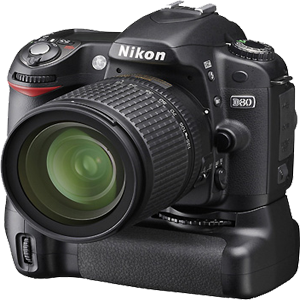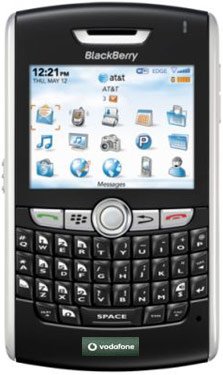The good: The Alienware M14x, Dell's latest Alienware laptop, manages to pack amazing performance into a smaller-than-expected body with plenty of configuration options.
The bad: High-end configurations can be insanely expensive, and Alienware's laptop design is overdue for a refresh.
The bottom line: It's tough to find mobile PC gaming in a package that's neither too big nor too small. The Alienware M14x comes very close, with plenty of component options and a size that's hefty, but not backbreaking.
Typically, the difference between a 14-inch laptop and a 15-inch one is very slight, although we generally prefer the smaller of these two options for the sake of portability. When it comes to chunky gaming laptops, however, the difference can be more pronounced. While we wouldn't consider taking Alienware's 15-inch M15x laptop on the road, the new 14-inch version, unsurprisingly named the M14x, looks and feels a good deal smaller--even if it's still a beast compared with other 14-inch laptops.
For truly portable gaming, you'd want to stick with the popular 11-inch M11x, pretty much the only gaming ultraportable you'll find. But this new in-between size is enticing for those who want to take their games on a family vacation or business trip and still enjoy a reasonable screen size and generous 1,600x900-pixel screen resolution.
All this doesn't come cheap, and our review unit of the M14x costs $2,198, which includes a high-end Intel Core i7 2820QM CPU, an Nvidia GeForce GT555M GPU, 8GB of RAM, and a 750GB hard drive. Fortunately, more realistic configurations start at $1,199.
It's been a few years since Dell gave its Alienware lineup a makeover, and it's starting to show. Like the recent M11x, the new M14x has the same angular, almost automotive design as the 15- and 17-inch models of a few years ago. When we first saw it we thought it was a good step toward a more upscale feel, but since then we've seen a lot of sharp laptop designs that go even further toward a modern, minimalist look.
The M14x has the same automotive-inspired grille along the front edge (which is only for show, not ventilation), a slick edge-to-edge glass overlay on the display, and a matte black chassis (the exterior of our system was a matte red). It's distinctive, to be sure, and will feel comfortable and familiar to longtime Alienware fans, but we're also eager for something new, and hopefully a bit slimmer. At 1.2 thick and 6.5 pounds without A/C adapter, this is still an effort to haul around more than occasionally.
Alienware's FX lighting and settings control system is still here. It lets you set the color for the backlit keyboard and the other light-up parts of the system. Backlit keys can be essential while gaming, as a black-on-black keyboard can be tough to make out in the dark.
The keyboard has a more traditional tapered key design, rather than the wider, flat keys many laptop makers are partial to these days. The company has previously said that these tapered keys provide more space between the individual letters, which is better for first-person shooters, which make heavy use of the WASD keys. We're not sure we have a favorite key design for playing games, but it's an interesting theory.
Alienware has always had excellent touch pads, although much of the rest of the laptop industry is catching up in terms of size. The smooth, matte texture on the touch pad feels great under your fingers, and the two large, distinct mouse buttons are welcome. As with previous Alienware laptops, the touch pad is demarcated by a backlit ring, the color of which is selectable. A few touch-pad options, such as the size of the scroll bar, are controlled by an app called AlienTouch, but we didn't see any multitouch gestures such as two-finger scrolling.
On a 14-inch display, we'd expect to normally find a 1,366x768-pixel resolution, but for this much money, it's only natural to expect more. This model's native resolution is actually 1,600x900 pixels, which is a step up for gaming. We'd be tempted to ask for full 1,920x1,080-pixel resolution, but on a 14-inch screen text could become hard to make out. The built-in Klipsch speakers are as good as any we've heard in a laptop this size, and better than you'd find in many larger laptops.
While the ports and connections on the M14x are mostly standard stuff, we appreciate the triple video-out setup of HDMI, VGA, and Mini DisplayPort. Missing are high-speed data ports such as eSATA and Thunderbolt, but you do get a pair of USB 3.0 connections and optional WiMax.
You also get a potentially useful optional wireless display antenna, bundled with a Vizio-branded receiver, instead of the usual Netgear one (Alienware isn't using the more common Intel Wireless Display version of the technology). With that, you can hypothetically beam the action to a nearby big-screen TV, although we've been unable to make the connection yet, despite plenty of experience with the Intel/Netgear version of the technology. Check back for an update after we try some newer drivers.
The real star of the show is the quad-core Intel Core i7 2820QM processor, which sits at the top of Intel's current laptop lineup. It's a very powerful CPU, making it so that only recent very high-end systems, such as Apple's high-end 15-inch MacBook Pro, are comparable to the M14x in our benchmark tests. That said, it's more CPU than you probably need, and most M14x buyers should be fine taking the CPU down a few levels when selecting system options online to save some money.
The Nvidia GeForce GT555M is also a newer top-of-the-line part, and helped run our Unreal Tournament III test at 1,400x900-pixel resolution at 240.4 frames per second. Playing a more recent game, such as Mafia II, at 1,600x900-pixel resolution with very high graphics settings got us a more realistic number, 34.8fps. Either way, this is a zippy gaming machine and more than enough to handle the latest games (although not at 1,920x1,080 pixels, as the M14x's screen resolution doesn't go that high).
For truly portable gaming, you'd want to stick with the popular 11-inch M11x, pretty much the only gaming ultraportable you'll find. But this new in-between size is enticing for those who want to take their games on a family vacation or business trip and still enjoy a reasonable screen size and generous 1,600x900-pixel screen resolution.
All this doesn't come cheap, and our review unit of the M14x costs $2,198, which includes a high-end Intel Core i7 2820QM CPU, an Nvidia GeForce GT555M GPU, 8GB of RAM, and a 750GB hard drive. Fortunately, more realistic configurations start at $1,199.
| Price as reviewed / Starting price | $2,198 / $1,199 |
| Processor | 2.3GHz Intel Core i7-2820QM |
| Memory | 8GB, 1,600MHz DDR3 |
| Hard drive | 750GB 7,200rpm |
| Chipset | Intel HM67 |
| Graphics | Nvidia GeForce GT 555M / Intel HD 3000 |
| Operating system | Windows 7 Ultimate (64-bit) |
| Dimensions (WD) | 13.4x9.7 inches |
| Height | 1.2 inches |
| Screen size (diagonal) | 14 inches |
| System weight / Weight with AC adapter | 6.5 pounds / 7.8 pounds |
| Category | Midsize |
The M14x has the same automotive-inspired grille along the front edge (which is only for show, not ventilation), a slick edge-to-edge glass overlay on the display, and a matte black chassis (the exterior of our system was a matte red). It's distinctive, to be sure, and will feel comfortable and familiar to longtime Alienware fans, but we're also eager for something new, and hopefully a bit slimmer. At 1.2 thick and 6.5 pounds without A/C adapter, this is still an effort to haul around more than occasionally.
Alienware's FX lighting and settings control system is still here. It lets you set the color for the backlit keyboard and the other light-up parts of the system. Backlit keys can be essential while gaming, as a black-on-black keyboard can be tough to make out in the dark.
The keyboard has a more traditional tapered key design, rather than the wider, flat keys many laptop makers are partial to these days. The company has previously said that these tapered keys provide more space between the individual letters, which is better for first-person shooters, which make heavy use of the WASD keys. We're not sure we have a favorite key design for playing games, but it's an interesting theory.
Alienware has always had excellent touch pads, although much of the rest of the laptop industry is catching up in terms of size. The smooth, matte texture on the touch pad feels great under your fingers, and the two large, distinct mouse buttons are welcome. As with previous Alienware laptops, the touch pad is demarcated by a backlit ring, the color of which is selectable. A few touch-pad options, such as the size of the scroll bar, are controlled by an app called AlienTouch, but we didn't see any multitouch gestures such as two-finger scrolling.
On a 14-inch display, we'd expect to normally find a 1,366x768-pixel resolution, but for this much money, it's only natural to expect more. This model's native resolution is actually 1,600x900 pixels, which is a step up for gaming. We'd be tempted to ask for full 1,920x1,080-pixel resolution, but on a 14-inch screen text could become hard to make out. The built-in Klipsch speakers are as good as any we've heard in a laptop this size, and better than you'd find in many larger laptops.
| Alienware M14x | Average for category [midsize] | |
|---|---|---|
| Video | VGA, HDMI, Mini-DisplayPort | VGA plus HDMI or DisplayPort |
| Audio | Stereo speakers, headphone (2x)/microphone jacks | Stereo speakers, headphone/microphone jacks |
| Data | 1 USB 2.0, 2 USB 3.0, SD card reader, SIM card slot. | 4 USB 2.0, SD card reader, eSATA |
| Expansion | None | ExpressCard/54 |
| Networking | Ethernet, 802.11n Wi-Fi, WiMax | Ethernet, 802.11n Wi-Fi, Bluetooth, optional mobile broadband |
| Optical drive | DVD burner | DVD burner |
You also get a potentially useful optional wireless display antenna, bundled with a Vizio-branded receiver, instead of the usual Netgear one (Alienware isn't using the more common Intel Wireless Display version of the technology). With that, you can hypothetically beam the action to a nearby big-screen TV, although we've been unable to make the connection yet, despite plenty of experience with the Intel/Netgear version of the technology. Check back for an update after we try some newer drivers.
The real star of the show is the quad-core Intel Core i7 2820QM processor, which sits at the top of Intel's current laptop lineup. It's a very powerful CPU, making it so that only recent very high-end systems, such as Apple's high-end 15-inch MacBook Pro, are comparable to the M14x in our benchmark tests. That said, it's more CPU than you probably need, and most M14x buyers should be fine taking the CPU down a few levels when selecting system options online to save some money.
The Nvidia GeForce GT555M is also a newer top-of-the-line part, and helped run our Unreal Tournament III test at 1,400x900-pixel resolution at 240.4 frames per second. Playing a more recent game, such as Mafia II, at 1,600x900-pixel resolution with very high graphics settings got us a more realistic number, 34.8fps. Either way, this is a zippy gaming machine and more than enough to handle the latest games (although not at 1,920x1,080 pixels, as the M14x's screen resolution doesn't go that high).








